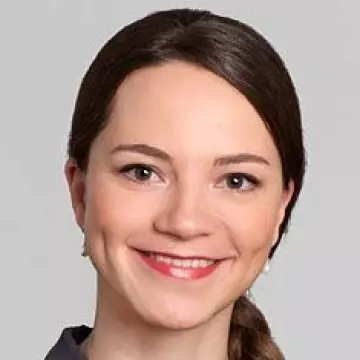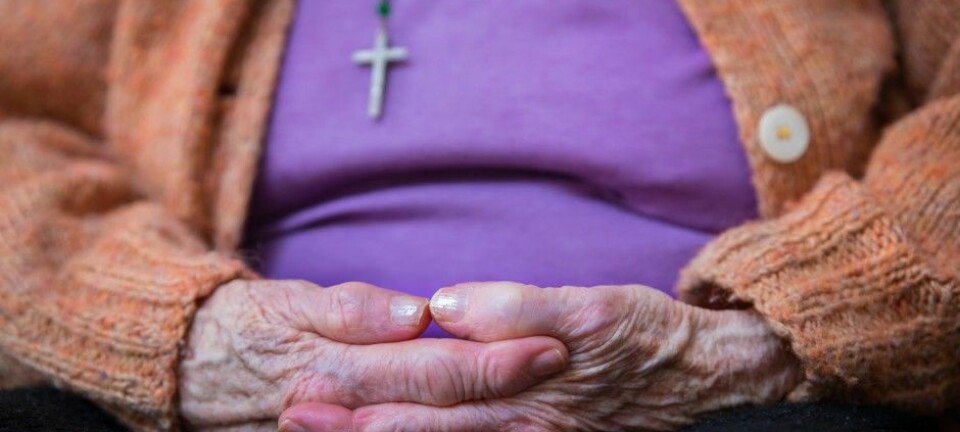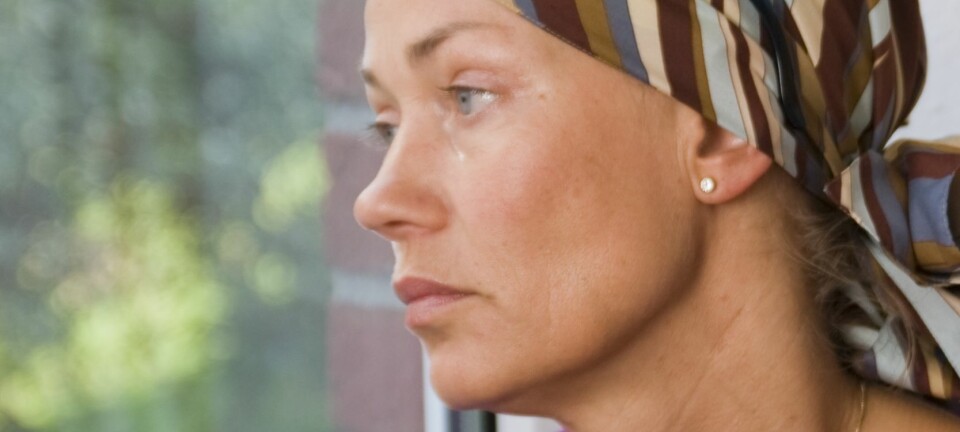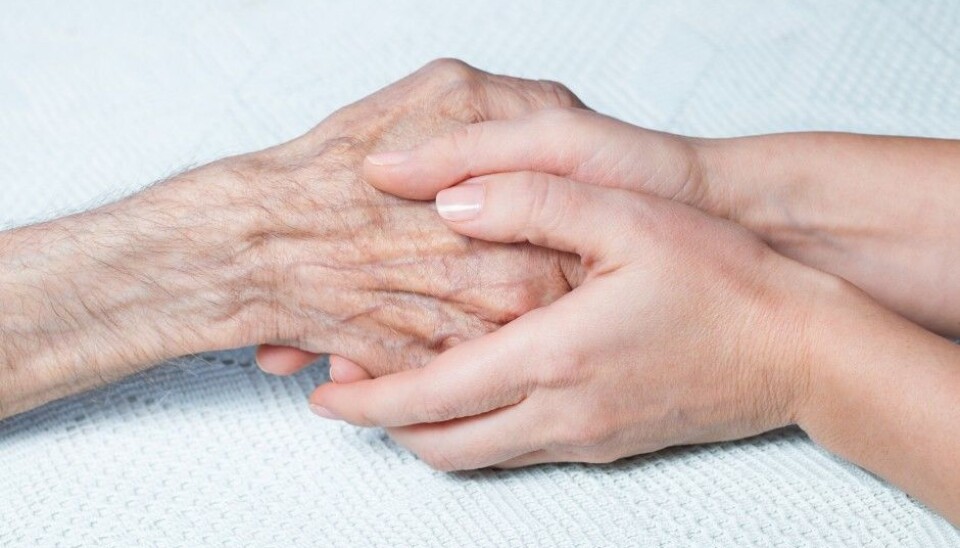
Patients with mental problems hide their visits to the traditional healer
Traditional healing and conventional medicine converge for patients with mental illness. But fear of being labelled as sicker than they are keeps many from sharing freely with their psychologist.
Denne artikkelen er over ti år gammel og kan inneholde utdatert informasjon.
Mentally ill patients in northern Norway go to see both their local healer and their psychologist. But many of them don’t dare to tell their psychologist that they believe in traditional healing.
Thor, a man in his late 40s, talks about the help he gets from his traditional healer. When he gets a læsing, literally meaning “reading” in Norwegian, his anxiety releases its grip for a while.
"When I feel this wave of nerves in my body, I like to be near the sea or in the woods. I'll call my helper for a læsing, and he quiets my inner storm. "
Traditional healers are locally referred to as helpers. Thor’s helper, who reads from the Bible to heal, believes he received an ability to heal everything from stopping blood from flowing out of the body to quieting the storms at sea. He believes that God's power flows through him and acts on others. This is how he can also alleviate a person’s inner pain, such as Thor’s psychological ailments.
A regional brew
Local healing traditions have deep roots in the north. Læsing stems from Sami tradition and Laestadianism, a Lutheran revival movement that started in Lapland in the mid-19th century. But in northern Troms county it is common for a wide variety of people to seek help from healers when illness or crisis strikes, says Mona Anita Kiil, a PhD candidate at UiT Norway’s arctic university.
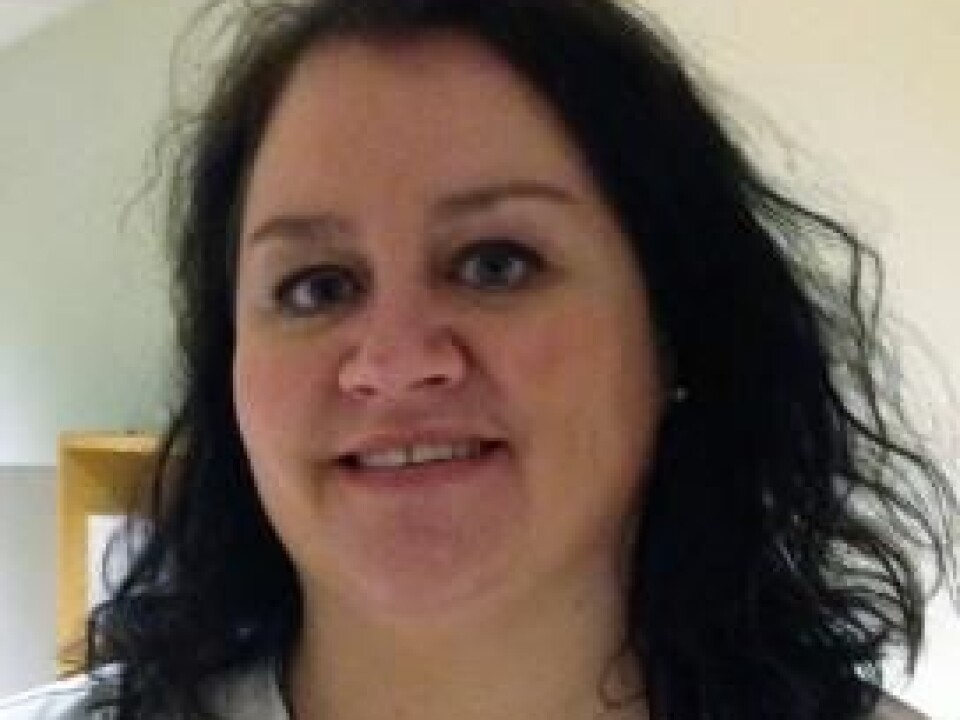
“It’s a kind of north Norwegian cocktail that everyone can drink,” she tells forskning.no. Kiil’s soon-to-be-delivered doctoral thesis explores how twelve patients with anxiety and depression turn to both traditional healing and the public health system in Nordreisa municipality. Thor is one of them.
Seeing the dead
Thor’s helper reads quietly so the words don’t lose their power. For this reason, many of the healing methods are also secret. Occasionally he lays his hands on the person who needs help. He can intercede or conduct rituals with steel, soil, water and other elements of nature.
He sees his abilities as having been transmitted to him from previous generations, and as a call to use them to help others, for free.
Helpers, ranging in age from 22 to 74, are a natural part of life for the patients Kiil spoke with. The healers are always available by phone, and because they have the same worldview, patients can talk about everything from the power of nature to dead people who come to visit.
This is what Johanna did, when she thought that she saw her dead father in the room:
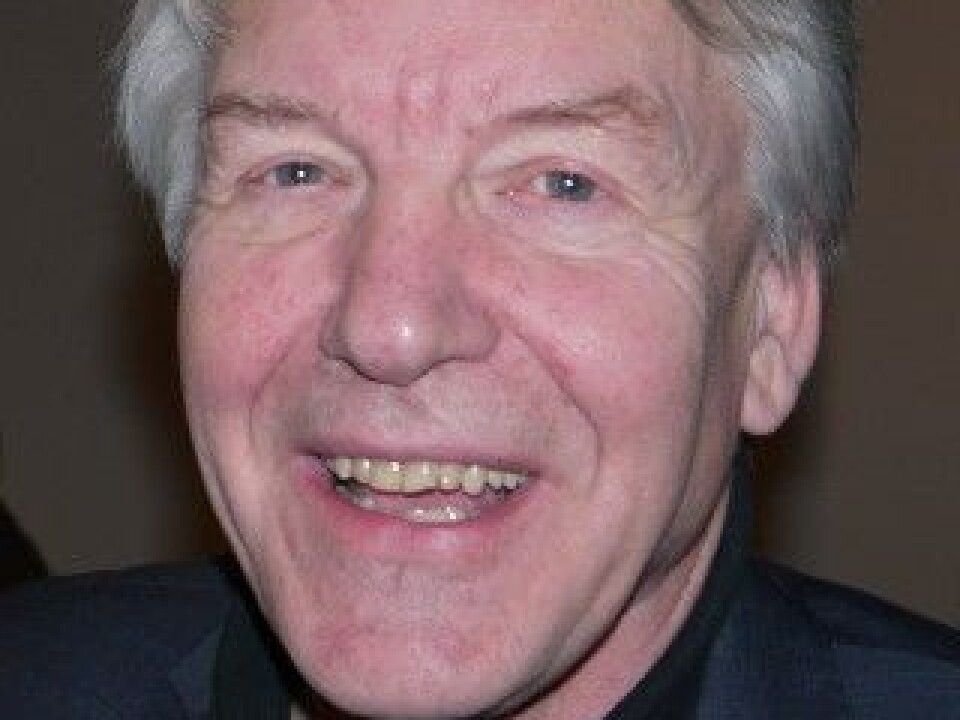
"When I opened my eyes, he was still there. This event comforted me at a time when my life felt like a big crisis. I called the helper the same day, and he calmed me down about the experience," the 57-year-old says.
The spiritual has a role in the understanding of the patients’ illness.
But often patients won’t tell their psychologist about experiences like Johanna’s. "If I were to talk about my life and how I understand healing, most therapists would think I'm completely nuts," she says.
Seeing the dead can be interpreted as hallucinations and psychosis. “But this is part of these patients’ culture, and they talk about their experiences in a very natural way,” says Kiil.
“They’re afraid of being seen as sicker than they are and of being put on strong medications,” she adds.
Tradition vs. disease
According to UiT professor and ethnographer Jens Ivar Nergård, seeing the dead is a concrete experience for an entire ethnic group. “If we call it sick, then in this case an entire population is hallucinating. These experiences grow out of a tradition, not disease,” he says.
Nergård leads a research group that Kiil is part of. He says the encounter with psychiatry is particularly challenging, because spiritual experiences can be confused with symptoms of mental illness if health personnel don’t know the cultural backdrop.
“Psychiatrists have to keep their eyes open, because they risk abusing their discipline by diagnosing an entire cultural tradition,” he said. Several researchers have also pointed out patients’ fear of talking about their trust in traditional healing.
“Kiil’s findings aren’t surprising. But they are important because we still know too little about how people in this group experience the health care system,” says Nergård, whose own research on Sami psychiatric patients corroborates Kiil’s findings.
So do patients really have something to fear in their encounters with healthcare personnel?
Some patients say they’ve been ridiculed when they disclosed their views. Others found that more recently they were understood by a therapist who was from the same region.
“I don’t think they have anything to fear as far as being misdiagnosed goes. But revealing themselves is still scary for patients. It's about how they appear to the therapist,” Kiil said.
Little research exists on health professionals' attitudes towards læsing. A pilot project in another Norwegian-Sami area, where Laestadianism has a strong foothold, indicates that they have knowledge of and respect for people's beliefs.
Opinions differ about whether healing and other traditional medicine should be a part of psychiatry. “The important thing is that patients find acceptance and understanding of their thoughts and local practices. And that they dare to talk about them,” says Kiil.
Better training important for better care
Patients that Kiil interviewed thought that therapists have more insight into local practices now than before. But both Kiil and Nergård believe that the health care system still often lacks knowledge about different views on health, and that cultural understanding needs to become a bigger part of the training.
This will become more important as Norway accepts more refugees, Nergård says, and adds, “Many of them come from cultures that are even more different than we’re accustomed to. Are we equipped to take care of them when we can’t even manage to deal with traditions that we’ve lived with for so many years?”
“When you’re supposed to talk your way to health, not talking about what’s important to you is a problem,” Kiil says.
Patients may get worse treatment when they don’t open up to their therapist. They adapt and try to appear as "normal" as possible, and reflect how they think the therapist sees the world. You can’t get to the crux of the problem if there are so many layers around it.
Kiil’s fieldwork included observing her study subjects in different situations. She followed them home, to stores, to the cafe and to their healer. She showed interest in the spiritual, and they talked about a lot more in life than being sick. And Kiil found that, given the right setting, patients would talk about their health problems.
Kiil says the therapist has to engage with the patient’s life and world, and she suggests, “Maybe the therapist should sit down around the kitchen table with the older patients?”
Still seeing the psychologist
The twelve patients in the study feel that their helper understands them best. But they still go for treatment in the public health system. Kiil got no clear answer as to why, but it's clear that they want to live in both systems.
She believes the two treatments cover different needs. In addition to needing a diagnosis for financial supports and medication, professional therapy is different than a conversation with a læser.
Patients understand that professional therapy offers them long-term help to get better, Kiil explains. “The two treatments complement each other. Læsing is a comforting addition to professional treatment. A kind of pastoral care,” she says.
References:
Mona Anita Kiil: Belonging to Memories - Memories of Belonging. An ethnographic study of mental health and traditional healing in a North Norwegian community. PhD thesis at the Department of Clinical Medicine, University of Tromsø - Norway's arctic university, in process.
Mona Anita Kiil: “The paradox of home: Understanding Northern Troms as a therapeutic landscape,” in the book: Idioms of Sámi Health and Healing, The University of Alberta Press in 2015.
Translated by: Ingrid P. Nuse
———————————-
Read this article in Norwegian at forskning.no







